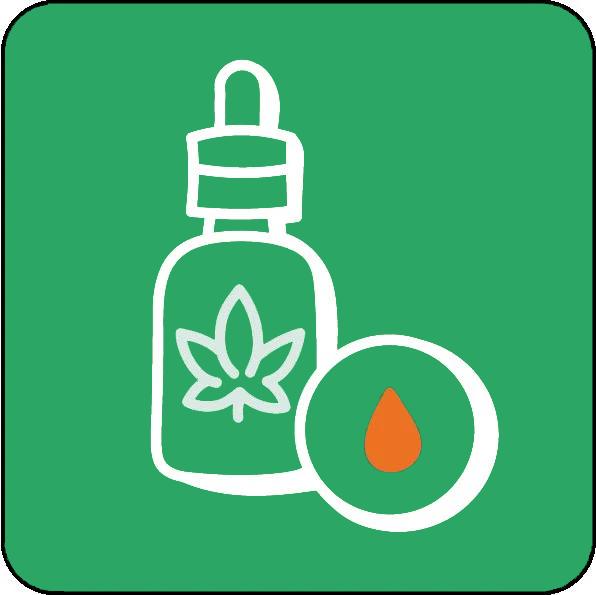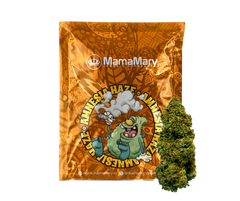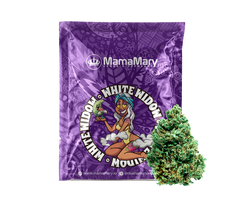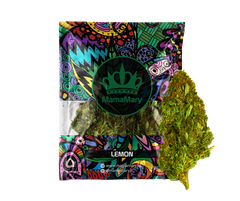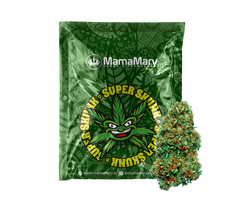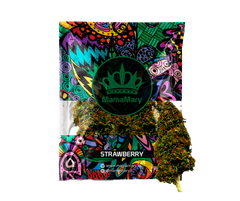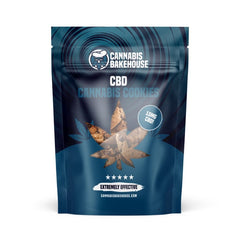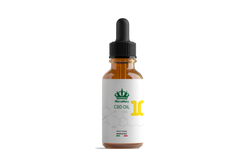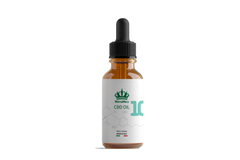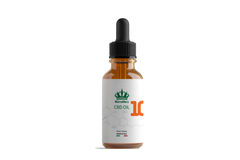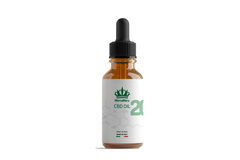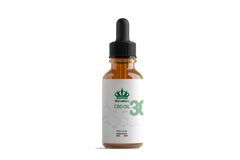How to Decarboxylate Cannabis: Complete Guide to the Marijuana Decarboxylation Process
Decarboxylation is an essential process for activating the cannabinoids in the cannabis plant , such as THC and CBD . Without decarboxylation , cannabinoids would remain in their acidic forms, namely THCA and CBDA , which do not offer the same psychoactive or therapeutic effects. In this blog, we will explore the cannabis decarboxylation process in detail , answering frequently asked questions, and explaining how to decarboxylate properly. Discover what decarboxylation is with us.
What is cannabis decarboxylation?
Decarboxylation occurs through a chemical process that occurs when cannabis flowers are heated, transforming cannabinoids from their acidic form to their active form. Specifically, THCA is converted to THC and CBDA to CBD, allowing you to enjoy their effects.
During the decarboxylation of cannabis, heat removes a carboxyl group from the cannabinoids, making them active and ready to interact with our endocannabinoid system . Without decarboxylation, the cannabinoids would remain in an inactive form and would not produce the desired effects, whether psychoactive or therapeutic.
How does the decarboxylation process work?

The process of decarboxylation occurs when cannabis is heated to a specific temperature. This heat causes the chemical bonds in acidic cannabinoids like THCA and CBDA to break , releasing carbon dioxide and converting them into the active forms, THCA to THC and CBDA to CBD .
The decarboxylation process can be done in a variety of ways, but the principle remains the same: heat the cannabis to a temperature between 105°C and 120°C for a certain period of time. It is important to control the temperature to avoid burning the valuable terpenes and cannabinoids .
Why is it important to decarboxylate marijuana?
Decarboxylation allows, through the activation of cannabinoids, to use cannabis in edible preparations , oils or extracts. Without decarboxylation , cannabinoids would remain in acid form, devoid of the typical therapeutic or psychoactive effects.
For example, the THCA found in “raw” cannabis buds has no psychoactive effects. Only when it is decarboxylated , including when smoked, does it convert to THC , the cannabinoid responsible for the “high.” Similarly, CBDA must be decarboxylated to convert to CBD and provide therapeutic benefits, such as pain or anxiety relief.
What is the ideal decarboxylation temperature for buds?

Decarboxylation temperature is one of the most critical factors in the success of the process. Heating cannabis too low may not fully activate the cannabinoids , while too high temperatures can destroy terpenes , the compounds responsible for aroma and some therapeutic benefits.
The ideal temperature for decarboxylation of THCA (to obtain THC ) is between 110°C and 120°C. For CBDA ( to obtain CBD ), the temperature can vary slightly, but is around 105°C-115°C. It is important to control the temperature and heat exposure time to ensure even and complete decarboxylation.
What are the steps to decarboxylate cannabis buds in the oven?
Decarboxylating your cannabis in the oven is one of the easiest and most accessible methods. Here’s how:
1. Prepare the cannabis : Grind the cannabis buds into small pieces, but do not grind them into a fine powder. This helps ensure even decarboxylation .
2. Preheat the oven : Set the oven to a temperature of around 110°C. It is essential not to exceed 120°C to preserve the cannabinoids and terpenes .
3. Spread the cannabis : Spread the ground cannabis on a baking sheet lined with parchment paper in an even layer.
4. Decarboxylate : Bake your cannabis for about 30-40 minutes, stirring every 10 minutes to ensure even decarboxylation .
After the process, the decarboxylated cannabis will be ready to be used in edible preparations such as cannabutter or cannabis extracts.
Is it possible to decarboxylate cannabis in the microwave?
While the oven is the preferred method, some people wonder if it is possible to decarboxylate cannabis in the microwave. The answer is yes, but with caution.
Microwaves heat unevenly, which can lead to incomplete decarboxylation or burning of cannabinoids . If you decide to try this method, use low power and heat the cannabis in 20-second intervals, stirring between intervals. This method is quick, but it doesn’t provide the same level of control and precision as an oven.
What happens to CBDA, THC, and CBD if you don’t decarboxylate cannabis?
Without decarboxylation , the cannabinoids in cannabis remain in their acidic form, namely THCA and CBDA . These compounds are not psychoactive, meaning that if you consumed raw marijuana , for example , you would not experience the effects of THC .
Additionally, CBDA and THCA do not activate receptors in our endocannabinoid system like their activated counterparts, CBD and THC . Decarboxylation is therefore essential to unlock the full therapeutic and psychoactive potential of cannabis .
Does decarboxylation destroy terpenes?

One of the main concerns during the decarboxylation process is the loss of terpenes , the aromatic compounds that contribute to the scent and therapeutic benefits of cannabis . Terpenes are highly volatile and can evaporate at high temperatures.
To avoid the destruction of terpenes , it is important to keep the decarboxylation temperature between 105°C and 120°C . Another way to preserve terpenes is to use vacuum decarboxylation methods , such as sous vide cooking , which allows you to heat the cannabis at low temperatures in a sealed environment, thus reducing the loss of terpenes and preserving their aroma .
Is it possible to decarboxylate cannabis in just a few minutes?
While the traditional decarboxylation process takes time (about 30-40 minutes), there are methods that allow you to decarboxylate cannabis in less time. For example, using a vaporizer at high temperatures can quickly decarboxylate cannabinoids.
However, it is important to remember that rapid decarboxylation can result in the loss of some terpenes and a reduction in the overall quality of the cannabis . Therefore, it is advisable to follow the traditional method to obtain uniform decarboxylation and best preserve all the properties of the cannabis .
What is the role of cannabinoid acids in decarboxylation?
Cannabinoid acids , such as THCA and CBDA , are precursors to the active cannabinoids THC and CBD . Decarboxylation converts these acids into their active form, allowing the cannabinoids to bind to receptors in our endocannabinoid system and produce therapeutic or psychoactive effects.
Before decarboxylation , cannabinoid acids cannot directly interact with our endocannabinoid system effectively. For example, THCA, the main acidic cannabinoid found in raw cannabis, has no psychoactive effects. Only after it is subjected to heat in the decarboxylation process does it transform into THC, the compound responsible for the psychoactive effects that many seek when consuming marijuana.
The same goes for CBDA , which converts to CBD once decarboxylated. CBD is known for its therapeutic benefits, including anxiety reduction and pain relief, but without decarboxylation , CBDA would remain in its inactive form.
What are the alternative methods to decarboxylate cannabis?
In addition to the traditional oven method, there are other ways to decarboxylate cannabis . Here are some alternatives:
1. Vacuum decarboxylation : This method uses a device called sous-vide . The cannabis is sealed in a heat-resistant bag and immersed in water at a constant temperature (around 90-95°C) for an extended period of time (about 1-2 hours). Vacuum cooking is particularly advantageous because it preserves both the cannabinoids and terpenes, keeping the aroma of the plant intact.
2. Vaporizer Decarboxylation : Using a vaporizer, you can decarboxylate your cannabis as you consume it. This method heats the cannabis enough to activate the cannabinoids , but without combustion. The result is instant decarboxylation , allowing you to enjoy the therapeutic and psychoactive benefits without having to go through the oven.
3. Microwave Decarboxylation : As mentioned above, it is possible to decarboxylate cannabis using the microwave, although it is less precise and runs the risk of damaging the cannabinoids and terpenes . If you choose to use the microwave, it is important to do so in short bursts and on low power, stirring frequently to ensure even decarboxylation .
What to do with decarboxylated cannabis?
After decarboxylation is complete , decarboxylated cannabis is ready to be used in a variety of ways. Its active form makes the cannabinoids available for absorption by the body, allowing it to be used in a variety of preparations. Here are some ideas:
1. Cannabis Butter : A common use for decarboxylated cannabis is to make cannabutter, which can be used in a wide variety of edible recipes . Cannabis butter is a versatile ingredient, perfect for making sweet or savory dishes.
2. Oils : Decarboxylated cannabis can also be infused into oils, such as coconut oil or olive oil, creating a product that can be used for both culinary and therapeutic purposes.
3. Tinctures : By mixing decarboxylated cannabis with a high-proof alcohol, such as vodka, you can create tinctures that can be taken sublingually or added to drinks.
Conclusions on cannabis decarboxylation
Decarboxylation of cannabis is a crucial step in activating cannabinoids and allowing the plant to release its full therapeutic and psychoactive potential. Through decarboxylation , THCA is transformed into THC and CBDA into CBD , activating the compounds that can be used in edible preparations, oils or tinctures.
It is essential to control the decarboxylation temperature to ensure that the process is done properly without damaging the precious terpenes and cannabinoids . With methods such as baking, sous vide, or vaporizing, there are several options for obtaining decarboxylated cannabis ready for use.
In short, decarboxylation is the bridge between raw cannabis and its full active potential. Whether you’re making an infused oil or a delicious cannabis dessert , always make sure to decarboxylate your cannabis for the best results.




